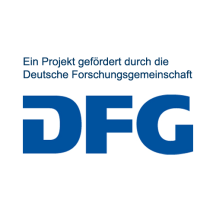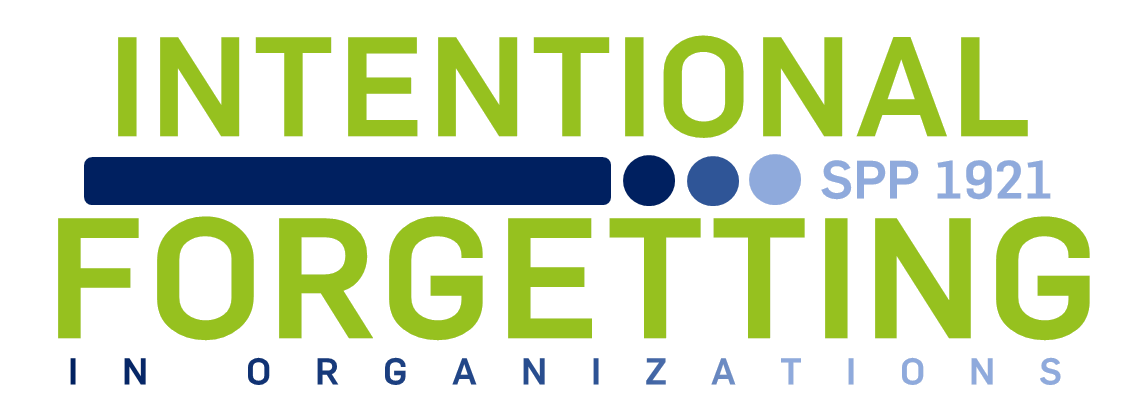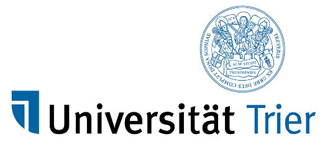
Nachhaltige evolutionäre Unternehmensgedächtnisse: Methoden und Effekte von Managed Forgetting für die administrative Wissensarbeit
2016 - 2019: Sustaining Grass-roots Organizational Memories: Foundations and Methods of Managed Forgetting for Knowledge Workers
- What is this project about?
In Phase 1 of Managed Forgetting, major progress has been made in the interdisciplinary investigation of the concept of managed forgetting for grassroots organizational memories supporting knowledge work. In Phase 2, we plan to further the concept of managed forgetting with a special focus on its application in an organizational setting in administrative domains. This requires the investigation of the organizational framing and its implications, when introducing managed forgetting for information and knowledge worker in administrative company contexts.
We will also pursue the development of a joint model of human and digital forgetting for a deepened understanding of the underlying cognitive processes. In the interdisciplinary experiments, the imaging technique of functional near-infrared spectroscopy (fNIRS) will serve as a measure of cognitive load. From these insights, we expect contributions for a successful integration of forgetful information systems into work processes of information and knowledge workers and for cognitive-aware forgetful methods.
- What are the results of the project so far?
Foundations of Managed Forgetting: the idea of content, that becomes less relevant and sinks away from the user and is brought back up when (re)gaining relevance („memory buoyancy“, MB) was enhanced by methods of machine learning and incorporating user context into its calculation
- Investigation of relevant patterns and features for this MB assessment, investigation for different types of content (e.g. images, social media, forum)
- The interdisciplinary research resulted in novel idea of transferring the cognitive science concept of inhibition into information technology approaches (especially into forgetful methods) and on the central role of context for managed forgetting. Inhibition as temporal forgetting/suppression of information for better focusing in different working contexts.
Several forgetful methods & implementations based on our managed forgetting approach
- Reorganization, temporal hiding, summarization, condensation, and forgetful search
- Machine Learning methods to identify important patterns of digital forgetting to learn what to forget and what to remember and to automatically assess memory buoyancy values
- Expectation-oriented photo selection from personal collections
- Self-organizing, context-aware assistance in a forgetful Information System - cSpaces
- Corporate Memory CoMem & Semantic Desktop as prototype systems used in daily work at the DFKI enabling us to experience and investigate forgetting mechanisms
- CoMem (still without forgetting mechanisms) used as pilot at the energy provider enviaM, thus industry partner ready for experimental usage in Phase II
From the user studies we could derive so far
Effects of digital forgetting
-> Beneficial effect of a given relevance classification of work content
-> Irrelevant and misleading information interferes with the actual problem solving task in the same way if it is known to be annoying
-> Misleading information is particularly disturbing if it is not known whether it is disturbing & it must be actively processed
Cognitive Offloading/ Saving-enhanced Memory: Saving improves cognitive performance in general
-> After saving, more math problem tasks are solved. That means, using external memory frees cognitive ressources
-> The Semantic Desktop’s assistance sidebar had an effect of helping users in high memory load situations to perform better
Context Switching: the Semantic Desktop’s assistance sidebar especially capturing user activities and working context and reorganizing itself accordingly eases task resumption
- What are the objectives of the project?
In Phase 2 we address the following objectives:
1. Investigating the implications of the organizational framing, when introducing managed forgetting in a corporate information & knowledge worker context in administrative scenarios; this includes aspects such as legal and organizational constraints for managed forgetting and memory buoyancy bootstrapping.
2. Extending the methods for multifaceted information value assessment (memory buoyancy) along the dimensions of context, time and interaction; this includes the consideration of different kinds of personal, shared, and organizational context, the interaction between them as well as mid- and long-term aspects of managed forgetting.
3. Examining effects of incorporating cognitive principles of saving-enhanced memory, directed forgetting, and retrieval-induced forgetting in the Semantic Desktop (on cognitive performance of users).
4. Developing advanced “forgetful” information access methods for a grass-roots organizational memory, which embrace the idea of information aggregation, inhibitory mechanisms, and context.
5. Investigating the effects of managed forgetting on the user, which incorporates empirical testing, User Studies in Companies and investigating the interactions between human forgetting and digital forgetting in a joint model.
- How can organizations use the results?
All research, experiments, and insights are transferred into forgetful methods as well as our corporate memory infrastructure CoMem – as a knowledge-based system that includes the Semantic Desktop as one methodical as well as technological pillar – to embed knowledge work support into daily activities of corporate users on their desktop.
Therefore, organizations may experience Managed Forgetting and self-reorganization themselves, for example in studies in which we step-by-step enhance or introduce new information and knowledge work support methods powered by these new technologies based on aforementioned results and insights.
For instance, enviaM has already got a pilot of CoMem and will jointly investigate the organizational framing of managed forgetting, in particular by participating in user studies in real corporate settings where the pilot is currently used.
Project team
| Dr. Niederée, Claudia |

|
Research Center L3S | Applicant |
ResearchGate Google Scholar |
niederee@l3s.de |
| Nguyen, Thi Huyen, PhD Candidate |

|
Research Center L3S | Google Scholar | nguyen@l3s.de |
| Prof. Dr. Dengel, Andreas |

|
Department of Computer Science | Applicant |
ORCID ResearchGate Google Scholar |
Andreas.Dengel@dfki.de |
| Dr. Maus, Heiko |

|
Department of Computer Science |
ResearchGate Google Scholar |
Heiko.Maus@dfki.de | |
| Jilek, Christian, Dipl.-Wirtsch.-Ing. |

|
Department of Computer Science |
ResearchGate Google Scholar |
christian.jilek@dfki.de |
| Prof. Dr. Frings, Christian |

|
Department of Psychology | Applicant |
ORCID ResearchGate |
weiland@uni-trier.de |
| Runge, Yannick, M.Sc |

|
Department of Psychology |
ORCID ResearchGate |
runge@uni-trier.de |
| AR PD Dr. Tempel, Tobias |

|
Department of Psychology | Applicant |
ORCID ResearchGate Google Scholar |
tobias.tempel@ph-ludwigsburg.de |
| Gauselmann, Paula |

|
Department of Psychology | paula.gauselmann@ph-ludwigsburg.de |
Former collaborators
| Ceroni, Andrea, M. Eng. |

|
ORCID ResearchGate Google Scholar |





